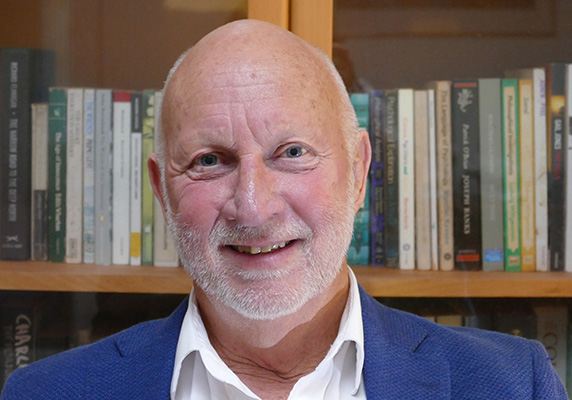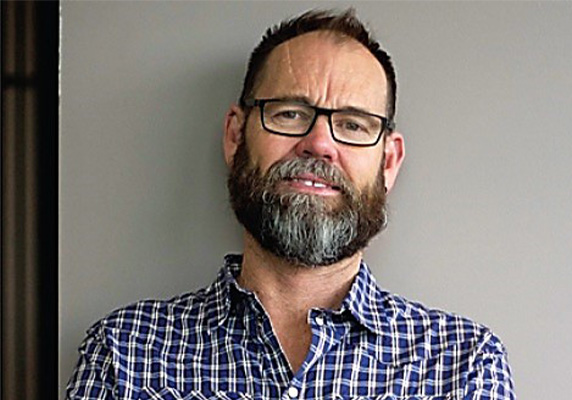The NSW drug courts have been effective at reducing the chance of reoffending, but the system's limitations will affect its future success.
You don’t often see dancing in a NSW court. But a video posted online by the Department of Communities and Justice (DCJ) records a graduation ceremony at Parramatta Drug Court spectacularly enlivened by the rippling entry of a troupe of body-painted Indigenous dancers, waving flags, striking clapsticks and singing in Language.
The leader of the dancers addresses the offender on behalf of The Glen, an Indigenous-specific rehabilitation centre on the Central Coast.
“Well done, brother,” he says. “Love ya.”
The offender fist pumps each dancer as they leave the court, then turns to the bench.
“Thank you, Judge,” he says, “for the opportunity you gave me to better my life.”
The judge smiles and presents him with a certificate.
“By making such as fabulous success of your Drug Court program,” says the judge, “it does add to the weight of evidence that this type of process works.”
It’s stirring and life-affirming. Everyone looks pleased and proud. Yet the question remains: does the Drug Court of NSW really reduce reoffending?
The short answer is yes, it does – but we don’t know if it will continue to do so.
A way to win the war
Ongoing research at the National Drug and Alcohol Research Centre (NDARC) in collaboration with the NSW Bureau of Crime Statistics and Research (BOCSAR), led by criminologist and former BOCSAR Director, Professor Don Weatherburn, is several months from reaching any conclusions. But there are signs the changing face of hard-drug use may render the Drug Court less effective unless the system adapts to deal with a different type of offender.

The idea of the drug court emerged in the US in the late 1980s, when it became apparent the “War on Drugs” was being won by drugs. The aim was to treat the problem of drug addiction rather than the symptom of offending.
Australia’s first Drug Court opened in Parramatta in February 1999, and today, hearings are also held in Sydney, Dubbo and the Hunter Valley in NSW, while versions of drug courts exist in every other state and territory. The court operates according to a model of “therapeutic jurisprudence” widely championed by practitioners in the field.
“The source of some of the strongest support for drug treatment and drug diversion are criminal lawyers – whether they’re prosecutors or defence lawyers – who are dealing daily with people who have got themselves into a bad situation as a result of regular or dependant drug use,” says Weatherburn. “Judges themselves had got fed up with the revolving door of prison: you lock them up, they come out and offend again, and then they’re back before the courts.”
“Magistrates have no real chance to deal with [an offender] on an individual level for any length of time,” says Professor Murray Lee, a criminologist at the University of Sydney Law School. “They talk about feeling disempowered in terms of helping that person. A lot of people want to help.”
In NSW, the Drug Court is reserved for non-violent offenders who might otherwise face a custodial sentence. Each participant receives an individual schedule based on an initial assessment by a team that includes medical specialists, but the participant must also agree to undertake a treatment program and consent to random urine testing. Efforts are made to help participants find a job, and if they remain drug-free their supervision is gradually loosened.
The judge follows the offender’s progress until they either leave or complete the program, and refers to the person by their first name in court. “There’s open encouragement on the part of the judge,” says Weatherburn, “as if they had formed a working relationship. And that’s the aim of the exercise: the judge is trying to use his or her authority to encourage the person to change their behaviour.”
Best bang for your buck?
The system seems to be well intentioned, but flawed in parts.
“There are limitations on the operation of the Drug Court that really serve no useful purpose,” says Weatherburn.
For example, an offender with an alcohol problem is not eligible for the Drug Court, and anyone charged with a sexual or violent crime is also automatically barred from the program.
“It doesn’t make a lot of sense to me,” says Weatherburn. “If it’s simply a case of a person having a problem with alcohol and he gets involved in an assault, I would’ve thought that’s a paradigm case for someone who should get treatment for their alcoholism.”
Lee studied the Drug Court in its early years and encouraged his students to observe cases at Parramatta. “It was often seen as a softer way of dealing with people,” says Lee. “But, from my observations, it’s not very easy to graduate and very easy to fall off the wagon and get kicked off the program, or have it drawn out. You don’t get too many chances. The magistrate could be quite tough on people if they’d shown a positive test. They’d ask them to explain what had happened. They had to go through a lot of hoops.”

Lee offers an analysis of the graduation-ceremony video shared by Weatherburn: “It’s about trying to leverage whatever positive aspects someone has in their lives to help them get through the program,” he says, “whether that’s their Indigenous background or whatever else.
“They use some tropes of restorative justice as well, ‘positively shaming’ people when they do fall from, but also graciously applauding them when they’ve managed to stick to their regime. There’s a whole lot of little carrots and sticks.”
His students loved attending the court. “It was a real treat for them,” he says, “because I don’t think they believed that sort of justice was being used in New South Wales.”
While the Drug Court is one way of dealing with drug-related crime, it may not be the best way. “There’s a couple of structural problems with drug courts,” says Weatherburn. “They’re very expensive and some people argue that you get just as big a bang for your buck – if not more – if you simply refer dependent drug users to treatment, without the bells and whistles of a drug court. No-one knows for sure.
“The other problem is there’s a desperate shortage of medical services and drug-and-alcohol treatment services in rural New South Wales,” Weatherburn adds, “and there’s not much point setting up a drug court unless you’ve got those services. So there’s a real problem in expanding the reach of the Drug Court. There are thousands of people out there whose crime is drug-and-alcohol related, and only a small fraction of those people are getting referred to the Drug Court or other programs like MERIT (Magistrates Early Referral Into Treatment).”
The 12-week MERIT program enables eligible defendants to receive rehabilitation and treatment for their drug or alcohol issues. When defendants appear for sentencing at the end of the program, the progress they have made in MERIT is taken into account by the magistrate.
Weatherburn’s confidence that the NSW Drug Court is a success is based on the results of an earlier project by NDARC and BOCSAR which compared the rates of reoffending between Drug Court participants and non-participants.
Researchers followed up offenders for an average period of 13-and-a-half years. Some of the Drug Court cohort had extensive criminal records: about one in 20 had accumulated 15 or more convictions. In September 2020, the study reported findings that those offenders who went through the Drug Court had a 17 per cent lower reoffending rate than individuals referred to the program but not accepted – and, on average, they took 22 per cent longer to commit an offence against the person.
‘Offenders who went through the Drug Court had a 17 per cent lower reoffending rate than individuals referred to the program but not accepted.’
At the time Weatherburn said, “Our findings therefore show that participation in the Drug Court program can have lasting positive effects on the lives of recidivist offenders and are a credit to all those involved.”
However, the original study focussed on people who entered the Drug Court between 2000 and 2003, when most drug offenders were heavy heroin users who could potentially avail themselves of pharmacotherapy in the form of either methadone-maintenance treatment or buprenorphine.
An open question
“But, of course, times have changed,” says Weatherburn. “Methamphetamine is the big problem at the moment, and there is no pharmacotherapy for people who are dependent on methamphetamine – so it’s an open question now whether the Drug Court is as effective as it once was.
“And that’s the gap we’re trying to fill. We’re trying to find out whether for people after 2016, when methamphetamine took off, the Drug Court is any better.”
As yet, it is unclear whether the Drug Court will be more useful or less practical as a means of dealing with methamphetamine users. Certainly, it will be challenged: it cannot offer a drug-based treatment program, and it will have to find ways to connect with wealthier and better educated offenders.
“I don’t think last year’s heroin users are now using methamphetamine,” says Weatherburn. “I think it’s a different cohort altogether.
“Heroin is very attractive to people who just want to tune out of life and sit quietly and enjoy the tranquillity,” he says. “Whereas methamphetamine is attractive to people who want to feel all-powerful and full of energy. So they’ve very different effects and different levels of attraction for different users.”
The markets are distinct, too.
Among methamphetamine users, “there’s a bigger middle-class group”, says Weatherburn. “One of the reasons, I think, that we haven’t seen a surge in crime is because methamphetamine users are mainly paying for the drug out of their own income rather than breaking into houses or committing robberies to raise cash.”
Like cocaine, methamphetamine is an expensive drug, “but it’s mainly being consumed by people who have money,” says Weatherburn. “Whether it’ll stay that way is a moot point.”
While wealthier drug takers have proved to be early adopters of methamphetamine, usage is not confined to a single cohort and as long-term habits worsen, the lives of users might be more likely to fall apart. “Over time, as more and more dependent users emerge, it may be that we’ll see a resurgence of interest in crime as a means of funding purchases of methamphetamine or cocaine,” says Weatherburn.
‘As more and more dependent users emerge, [we may] see a resurgence of interest in crime as a means of funding purchases of methamphetamine or cocaine.’
At the moment, however, the worst crime committed by the majority of methamphetamine users is the purchase of methamphetamine. This presents a problem for people who try to measure the performance of the Drug Court: “If your base rate of offending is pretty low, it’s going to be that much harder to find a further drop in offending,” says Weatherburn.
Methamphetamine users are also liable to commit different types of offences. “Methamphetamine is a drug which tends to make people irritable, aggressive and violent,” says Weatherburn. “So, whereas you wouldn’t expect to find a heroin user arrested for an assault, you might find it more likely to arrest a methamphetamine user for assault.”
But, of course, a person charged with assault is not currently eligible to use the Drug Court.
It may be that the style of the Drug Court needs to be adopted in other areas. “Broader sorts of ingrained types of offending behaviour might benefit from a more therapeutic approach,” says Lee. “If you’re able to get someone onto some sort of an intensive program to deal with their violent behaviours, that could be really useful. But we just don’t have the capacity for that sort of ongoing supportive approach.”
Also, while it is now commonplace for people to view drug addicts as victims of their addiction, it is a lot more difficult to convince someone that a violent offender is somehow a victim of their own violence.
“Obviously, as a society, we feel there’s probably a limit to how supportive we can be of entrenched offenders,” says Lee, “and that’s a problem for this sort of justice.”
The joyous Indigenous-graduation video posted by DCJ dates back to 2018, before the pandemic and the recent round of Sydney gangland killings connected to the methamphetamine trade. If all goes to plan, the NDARC/BOCSAR study will report in December 2023 and we may have a clearer picture of the immediate future. Much has changed during the 24 years of operation of the Drug Court of NSW. There has been a lot to see, and no doubt there are many more surprises to come.

![[image] man working towards a lighted doorway to show possibility of hope through drug courts](https://lsj.com.au/wp-content/uploads/2023/07/drug-court-header.jpg)


